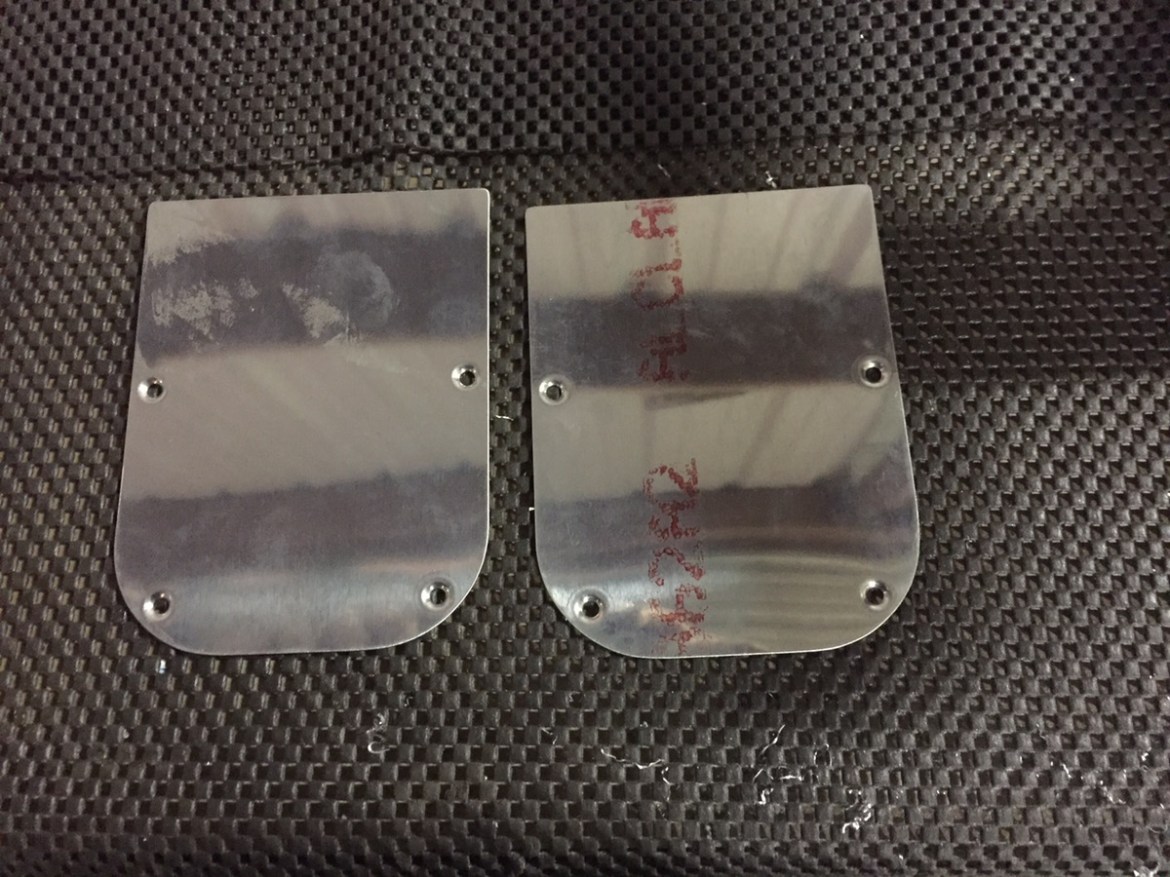I’ve started using Trello to keep track of the miscellaneous tasks I need to complete. At this point in the build, I don’t have a lot of structural elements remaining other than the bottom wing skins, the front upper fuselage skin, and the canopy. All of the major body parts for the plane are compete. If I wanted to, I could wheel this puppy into the middle of the hangar, put the already drilled gear legs on, attach the wings and the empennage and have something that actually resembles a plane. But, I’m not going to do that just yet. There is still a ton of work, and a lot of dependencies. Right now I have two remaining fuselage projects. First I need to get the majority of the interior painted. This needs to be done before I install the forward fuselage upper skin. Next, I need to install that skin, and then as the spring time is rolling around, it will be time to work on the canopy. With that in mind, there was only one significant portion of the cockpit that had not yet been riveted, and thats the rear seat back. So, that brings us to today.
The Show Planes fastback kit includes a new seat top for the rear passenger made from fiberglass. It looks much better than the stock metal seat back provided by Van’s. However, there are, as I discovered, some symmetry issues with the fiberglass. The first step is fitting the fiberglass into the opening and adjust the height. In order to do this you’ll need to trim the fiberglass just slightly at the corners (marked below).

Here you can see I trimmed the part twice. Once to intersect with the rear seat back, and again to fit between the cockpit rails.

I carefully adjusted the fit of the seat back in terms of height so as to not unduly rub the edges of the baggage compartment. I marked the mating points for reference and began drilling the seat back top. This is where I noticed my first asymmetry. The curve on the right side was higher than the left side. I didn’t notice by looking from the front, but rather by examining the rivet line in the rear. I went over to my buddy Mike’s hangar to see if he could notice. He was able to notice the difference when I held it to him straight on and told him to look for something off. With him able to notice the error, I resolved to fix it.
But wait. As I started to examine the part more carefully, I realized this wasn’t the only thing that was off. The left curve and the right curve don’t match. That is the left curve extends further in than the right. (You can see it slightly in the photo below). Additionally, the center of the raised center plane is actually offset to the right (shown by the arrow). These two things exaggerate the discrepancy. What to do? Well, I can tell you, I’m not intending to compete this plane for Oshkosh Grand Champion. And while I will fix anything that is even remotely structural all day, I’m not as keen to fix hardly noticeable cosmetic defects! As I really worked on trimming the part to fit, I noticed other discrepancies. Many of the measurements were not exactly the same from side to side.
What I wound up doing is this. I made darn sure the curves of both sides, both in height and distance are symmetrical, and I left it at that. If you look directly at the part, you can notice a few of the symmetry issues. Having show it to a couple people, most people notice the center offset, not the curves. Since the center offset is an issue with the part, and not my workmanship, it doesn’t bother me as much. Furthermore, I firmly believe no-one will ever notice this small asymmetry unless they 1) know about, and 2) look at it fairly straight on.

Here is the final part after all trimming and edge clean up.

And here it is installed. Can you see an issue?

I had to have some fun so I put my seat cushions in, and took a selfie. 

Two other small projects today. First I prepped the pilot’s air vent for attachment. I’m going to attach with proseal and two rivets. One fore and one aft. I scuffed and cleaned both surfaces and then primed the inside of the vent. Not pictured, but I also applied a second coat of proseal to my static vents. I’m extremely confident that those will neither leak, nor come loose!

On a side note, my buddy Mike recently got wifi is his hangar. Not to be outdone, I had to follow suit. Mike was nice enough to lend a hand, and we installed the Ubiquiti locoM2. (www.ubnt.com/products)

I placed it as discreetly as possible.

It was pouring rain, so I added a makeshift cover (its meant for outdoors, but I figured keeping the flood off the room from running down the device couldn’t hurt) I’ll put a more permanent solution in place soon.

Finally, the test. 18.83 Mbps! Thats awesome! The next project will be an arduino powered humidity and temperature sensor that relays the data to me on my iPhone!


















